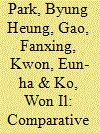|
|
|
Sort Order |
|
|
|
Items / Page
|
|
|
|
|
|
|
| Srl | Item |
| 1 |
ID:
110366


|
|
|
|
|
| Publication |
2011.
|
| Summary/Abstract |
As a nation develops its nuclear strategies, it must consider various aspects of nuclear energy such as sustainability, environmental-friendliness, proliferation-resistance, economics, technologies, and so on. A nuclear fuel cycle study could give convincing answers to many questions in regard to technical aspects. However, one nuclear fuel cycle option cannot be superior in all aspects. Therefore a nation must identify its top priority and accordingly evaluate all the possible nuclear fuel cycle options. For such a purpose, this paper examined four different fuel cycle options that are likely to be plausible under situation of Republic of Korea: once-through cycle, DUPIC recycling, thermal recycling using MOX fuel in PWR (pressurized water reactor), and SFR (sodium cooled fast reactor) employing fuel recycling by a pyroprocess. The options have been quantitatively compared in terms of resource utilization and waste generation based on 1 TWh electricity production at a "steady-state" condition as a basic analysis. This investigation covered from the front-end of the fuel cycles to the final disposal and showed that the Pyro-SFR recycling appears to be the most competitive from these material quantitative aspects due to the reduction of the required uranium resources and the least amount of waste generation.
|
|
|
|
|
|
|
|
|
|
|
|
|
|
|
|
| 2 |
ID:
090073


|
|
|
|
|
| Publication |
2009.
|
| Summary/Abstract |
The Korean National Energy Committee has recently adopted a new National Energy Basic Plan according to which the electricity generated by nuclear power plants is to increase from the current 35.5% of total electricity production to 59% by 2030. This large increase in nuclear power will inevitably accelerate the accumulation of spent fuel; if the direct disposal option is pursued, spent fuel arisings in Korea are expected to exceed 100,000 tHM in 2100. It is estimated that the country will require between 10-22 disposal sites, each with an area equal to the Gyeongju low- and intermediate-level radioactive waste (LILW) disposal site, to accommodate this amount of spent fuel. However, considering Korea's geographic profile, securing this number of sites will be almost impossible, and will ultimately create a serious problem for the sustainability of nuclear energy in the country. In view of this dilemma, this paper recommends that the volume of Korean nuclear waste for disposal be significantly reduced, and offers sodium fast reactor (SFR)-based recycling as a potentially viable solution.
|
|
|
|
|
|
|
|
|
|
|
|
|
|
|
|
|
|
|
|
|